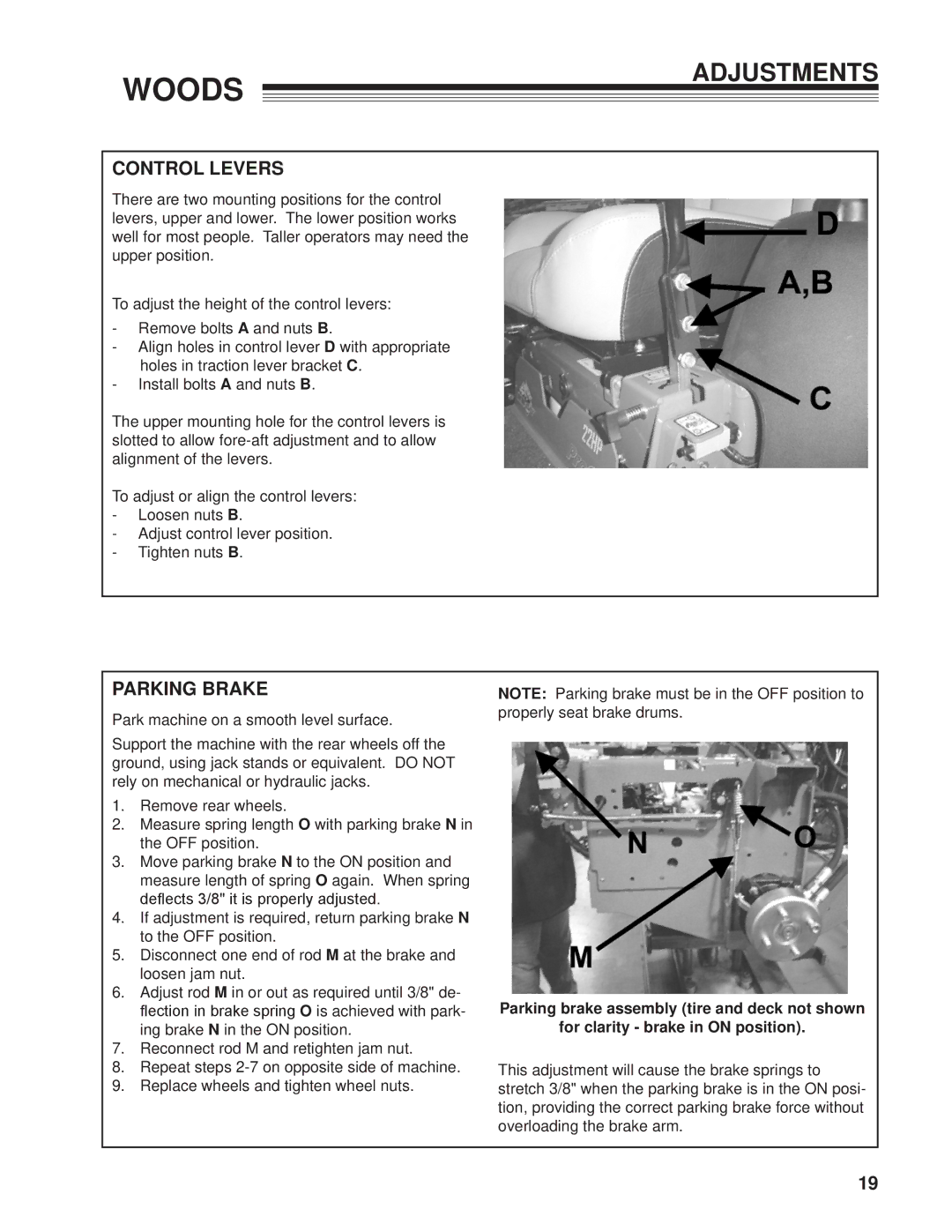872500G, 872502G, MZ2661K specifications
Woods Equipment is a renowned name in the agricultural and landscaping industry, known for its high-quality attachments and machinery designed for a variety of applications. Among its impressive lineup are the MZ2661K, 872502G, and 872500G models, each catering to specific needs and offering various advanced features and technologies.The Woods MZ2661K is a robust equipment piece known for its versatility and reliability. It features a powerful engine that provides excellent performance in various terrain conditions. The MZ2661K includes a heavy-duty frame designed to withstand rigorous use, making it suitable for both commercial and residential landscaping needs. Its user-friendly interface allows operators to easily control and navigate the unit, enhancing productivity and efficiency on the job site. Additionally, the MZ2661K boasts an adjustable cutting height, enabling users to customize their mowing experience based on specific lawn conditions.
The 872502G model is another powerful asset in the Woods Equipment lineup. This model is particularly notable for its advanced cutting technology, designed to ensure a clean and precise cut on every pass. It comes with an optimized blade design that enhances cutting efficiency while minimizing friction and wear. The 872502G also features a robust gearbox that ensures smooth operation under various loads, making it perfect for tackling tough grass and uneven terrain. Moreover, its easy-to-torque settings allow operators to fine-tune the mower to suit their preferences and specific tasks.
Lastly, the 872500G is designed for those seeking a lightweight yet efficient solution for their mowing needs. This model is engineered with agile maneuverability, making it ideal for navigating tight spaces and intricate landscapes. Its compact design does not compromise on power; the 872500G maintains exceptional cutting performance while being easy to transport and store. It includes a durable construction that promises longevity and resilience, even with regular use.
In summary, the Woods Equipment MZ2661K, 872502G, and 872500G models showcase the perfect mixture of advanced features, reliable technologies, and durable characteristics. From powerful engines to user-friendly controls and adaptable cutting heights, these machines are designed to meet the demanding needs of modern landscaping and agricultural practices. Each model caters to different user requirements while ensuring top-notch performance and reliability, solidifying Woods Equipment's reputation as a trusted leader in the industry.

